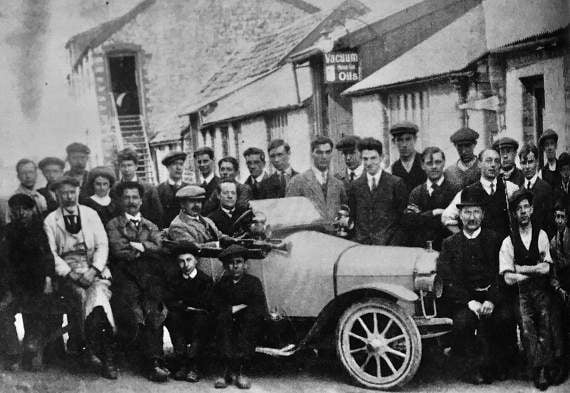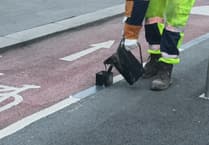Did you know that Mendip had its own motorcar created and manufactured in Chewton Mendip? Can you imagine that within the village, an industrial enterprise existed building steam lorries, then later, petrol vans and charabancs? You can read all about the rise and fall of this remarkable, yet little known local industry in a new book, Mendip Engineering and the Mendip Car – An Industrial Revolution in Chewton Mendip, by Tom Randall.
Local Historian and Founding Trustee of Radstock Museum, Tom Randall, from Welton, has spent many years carefully researching and piecing together the history of this Mendip company to produce a beautifully presented book packed with illustrations, including old photographs obtained from the families of those directly involved, which are published here for the first time. An old recording on a CD included with the book, transports you back in time as you hear the voice of local man, William Curtis, telling of his time working as an engineer for the company and driving the steam lorries built there in the early 1900s!
Tom’s interest in the Mendip engineering company began when he came across a postcard of the Mendip car in the 1980s. He said: “I was intrigued to discover that motor vehicles had been manufactured in Chewton Mendip of all places; with my background in engineering, having a keen interest in vintage vehicles and a passion for local history, I was enthusiastic to find out more.”
Tom went on to explain that his book tells the story of one man’s ambition: Charles Wesley Harris was a carpenter by trade, but his dream was to build motor vehicles. Harris started building agricultural carts and wagons in the 1890s at Bathway, Chewton Mendip. By 1900, he had built his Cutler’s Green Iron Works half a mile away. It had its own foundry and machine shops and was all driven by steam.
He built his first steam wagon in 1904, and then put his wagons on display at the Bath and West Show in 1908. By 1910, he was building petrol-driven delivery vans and charabancs, one of which he used to run a regular bus service between Wells and Bristol. In 1912, the local squire and former MP, William Henry Bateman Hope, of East Harptree joined him, and by 1914 they had produced the Mendip Car.
WWI intervened and the book tells for the first time in some detail the industrial war effort in Chewton Mendip, making aircraft engine components for fighter planes and grenade launchers for the army.
The Mendip Car was re-launched in 1919 and the business was moved to Southmead, Bristol. It was, however, beset with problems, and the story of its demise, told here for the first time, is so bizarre that one might think it more suited to a work of fiction rather than of local history!
This is also the story of the men who involved themselves in the fulfilment of one man’s dream, several of whom, despite the ultimate failure of the business, were spurred on to even greater enterprises, many of which made their mark on history.
When asked whether any of the Mendip vehicles have survived to this day, Tom said, “Only one Mendip Car exists today, it is in pieces in a barn in Somerset.”
Mr Randall’s book is available from Radstock Museum’s shop, with all proceeds from the sales going to museum funds.
Lucy Tudor





Comments
This article has no comments yet. Be the first to leave a comment.